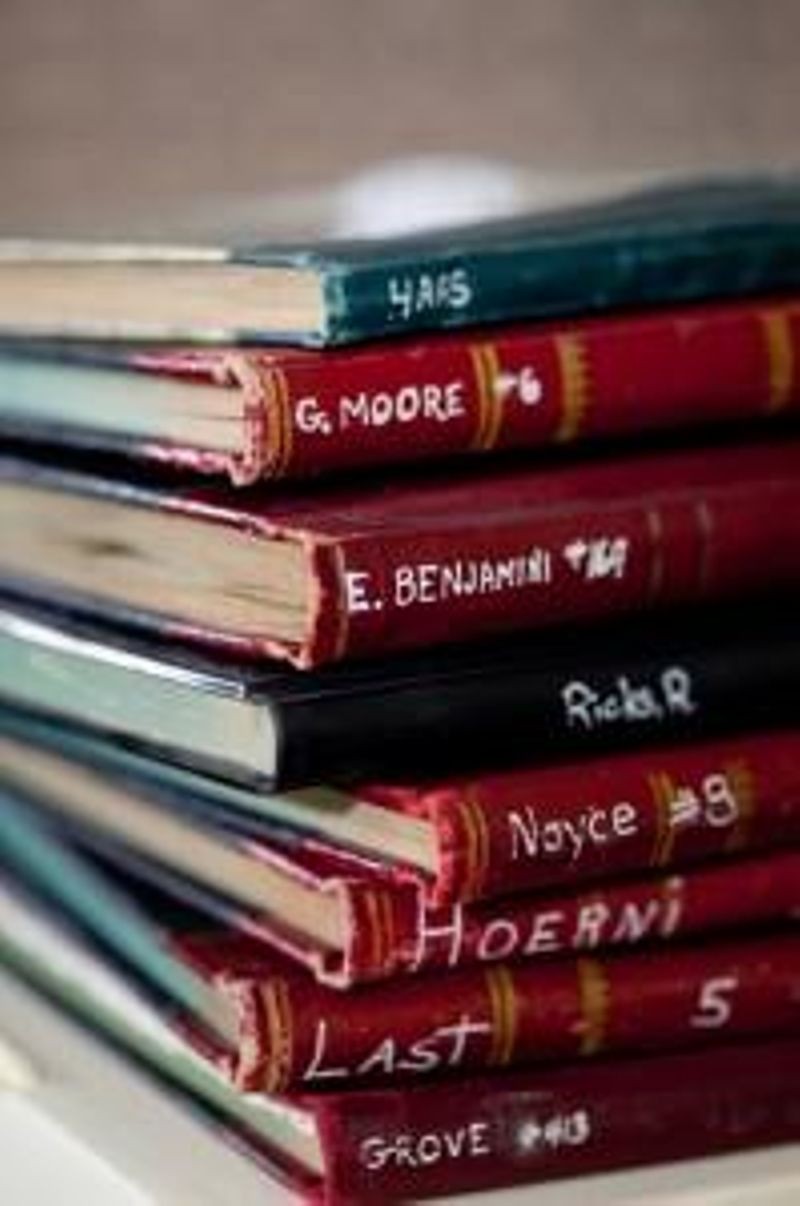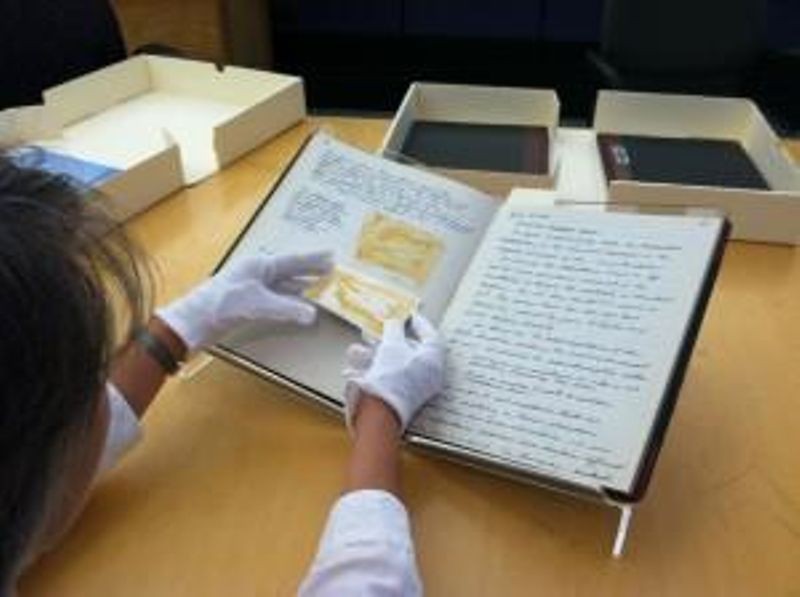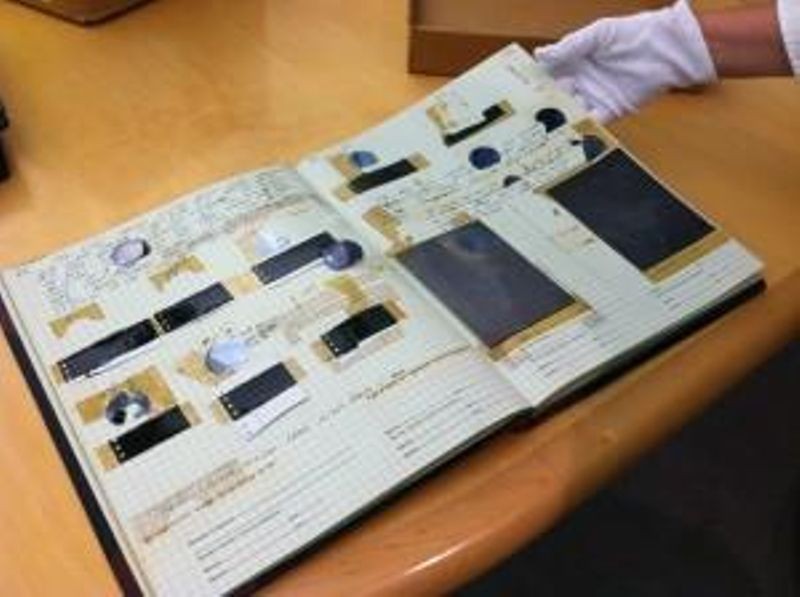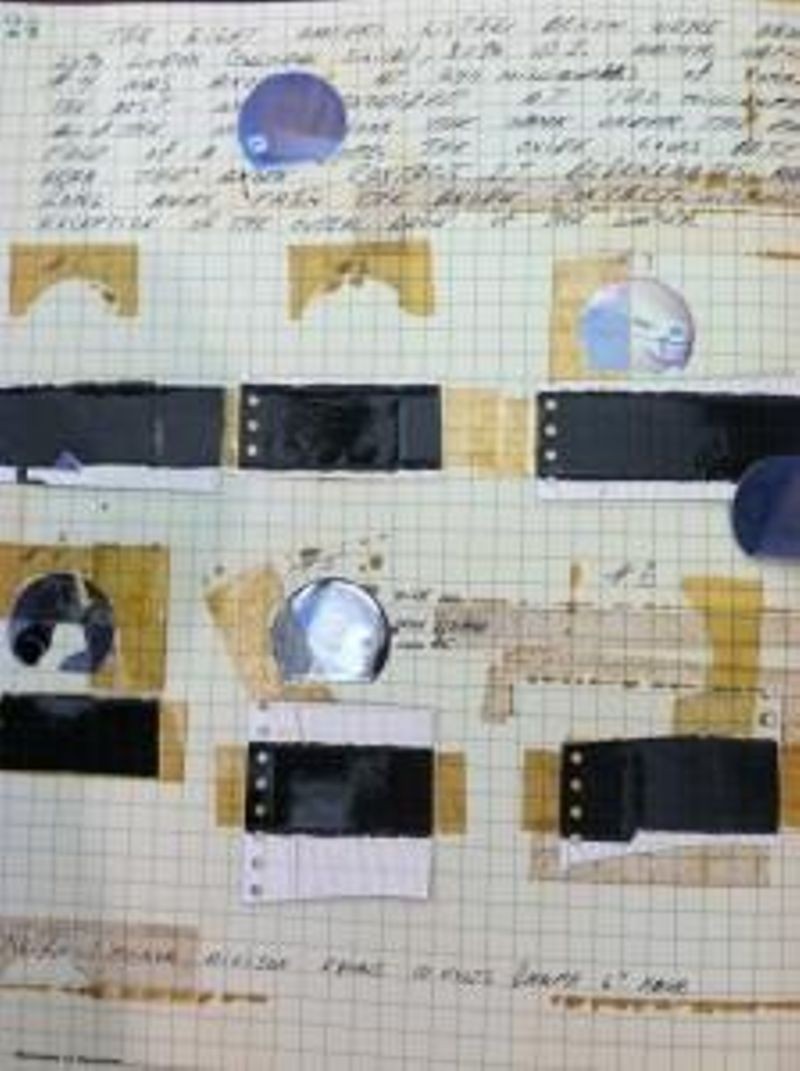
Conservation is the action or treatment of damaged materials to ensure their survival for as long as possible. Conservation may repair or simply stabilize cultural property.

Fairchild Notebooks donated to CHM in July 2012. Some of the most notable names in semiconductor history appear on the spines of these patent notebooks. © Dizon Studios
I recently had the opportunity to observe a conservation assessment of a highly anticipated new donation. Kathleen Orlenko was asked to assess the Texas Instruments donation of over 1,000 Fairchild Semiconductor patent notebooks. These notebooks, dating from 1957 through the 1970s, document ideas and innovations that revolutionized the science and manufacturing of microelectronics.
During a survey of the notebooks conducted by the museum when they were still held at the TI offices in Sunnyvale, it was determined that many (if not all) of the notebooks would need some sort of treatment before researchers could be allowed to access them. Photographs were pulling away from pages, photocopies were stuck together, and audible ck, ck, ck sounds could be heard as pages were turned.
During Kathleen’s visit I asked her what she looks for while doing an assessment. She said she just looks for anything that catches her eye, a discoloration on the page, a tear, anything that’s abnormal. As I watched Kathleen work I kept hearing the phrase inherent vice. According to Kathleen, the notebooks were made during the worst period in history for textual goods and from the cheapest materials available during that time. Benign neglect will not work as a preservation philosophy with these materials because, left to their own devices, they will continue to decay to the point of being unusable.

Conservator, Kathleen Orlenko examines a photograph that has detached from the page.
One example of material with inherent vice is diazo prints, which many of the diagrams are made from and then pasted into the notebooks. Diazo was a cheaper reproduction method then blueprints. However, the paper used in diazo printing yellows, darkens, and becomes brittle over time because of the instability of the chemicals used in the printing process. Diazo prints also tend to stain any material they come in direct contact with. Kathleen’s suggestion for “treating” Diazo prints is to copy the item and paste the copy back into the notebook using hinges or corners and remove the original completely, which can not be saved. Since the solution for treating Diazo prints is fairly straightforward, they are some of the easiest issues to address in the collection. More complicated issues remain.
According to Kathleen, the biggest issue is the use of adhesives throughout the notebooks. There is an inordinate amount of pressure sensitive tape and rubber cement, especially in the later notebooks. Not only do both of these substances stain the items they are meant to secure, they also stain the pages they secure to and that staining continues to migrate through to other pages. Left untreated the staining will migrate through all the pages. Rubber cement stains can turn so brown and disfiguring that it becomes impossible to read the text on the page.

Visible pressure sensitive tape stains and loss of adhesion.
The other problem with adhesives is that they cease to serve their purpose of adhering items to pages. Many pages are going to need to be re-constructed due to total loss of adhesive properties. Kathleen’s detective skills come into play at that point as she said she often reconstructs the original order of a page’s contents by lining up the tape/glue stains on the page to the tape/glue stains on the items that have fallen away. The good news is that the solvent used to reduce the staining caused by pressure sensitive tapes (from this era) and rubber cement is one of the lesser solvents and doesn’t pose a great threat to the integrity of the paper.

Close-up of Fairchild notebook page with multiple issues including loose wafers.
Another challenge with the notebooks is their binding. Most of the notebooks are bound with a starch filled cloth binding that has become sticky. There are two options for treating the cloth. One option is to treat the material with a solvent that will reduce the stickiness, but create splotchy areas. The other option is to enclose the notebooks in Mylar. This doesn’t actually treat the stickiness, but it does prevent two notebooks from becoming stuck together.
These are but a few of the issues Kathleen mentioned during the assessment. The museum is awaiting the official conservation assessment report. In the meantime, if you want to learn more about this donation please see Mike Cassidy’s article in the San Jose Mercury News.